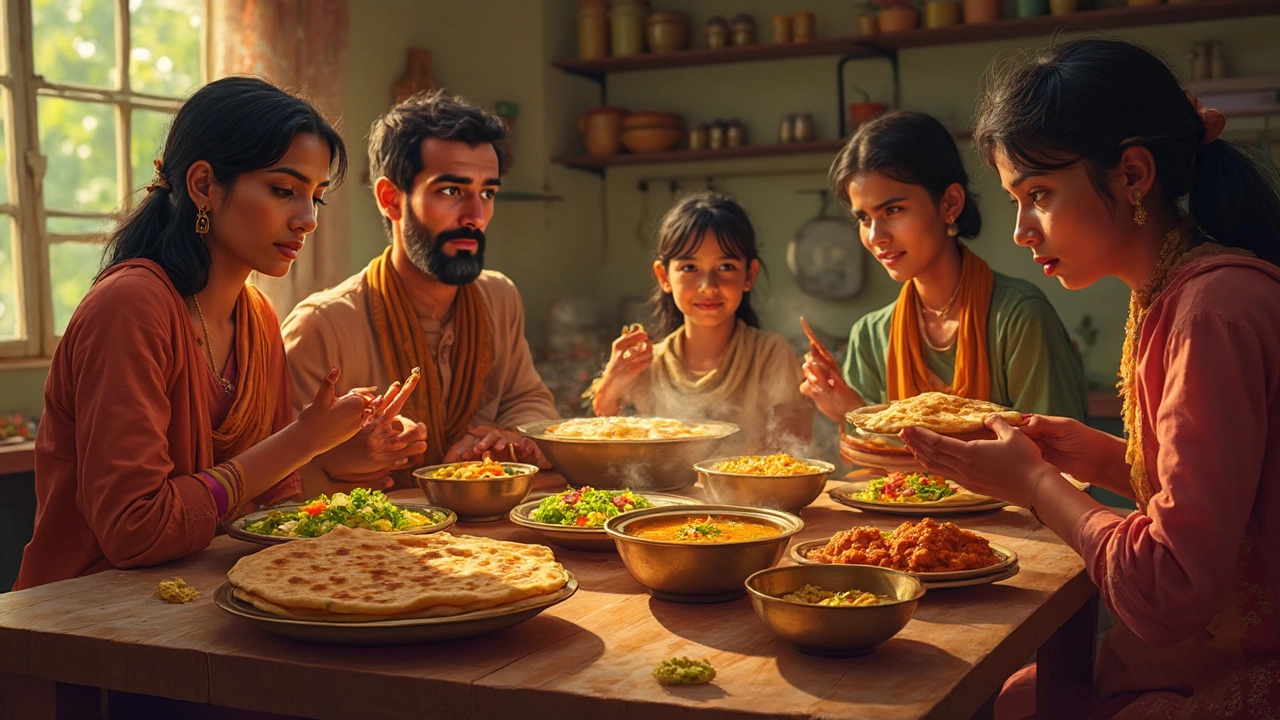Low‑Calorie Meals: Indian Recipes That Keep You Light and Satisfied
When exploring low‑calorie meals, Indian dishes that stay light on calories but big on taste. Also known as light Indian meals, they let you enjoy spices, textures, and tradition without overloading your energy budget. Low‑calorie meals encompass nutrient‑dense dishes, require smart ingredient swaps, and still honor regional flavors. For instance, a classic dal, protein‑rich lentil stew can be trimmed with extra water, reduced oil, and paired with steamed veggies to stay under 300 calories per bowl. Likewise, swapping paneer for tofu, plant‑based protein with low fat cuts calories while preserving that satisfying bite, making it a go‑to for weight‑watching cooks. These swaps aren’t gimmicks; they’re proven ways to keep the heart‑warming essence of Indian food while meeting modern health goals.
Beyond legumes and soy, fruit plays a surprisingly powerful role in low‑calorie meals. Adding a splash of fresh mango or a handful of berries to a salad or a chutney injects natural sweetness, letting you skip added sugars. The healthiest fruit, options like guava, papaya, and pomegranate also bring fiber and antioxidants that aid digestion and keep you full longer. When you blend fruit into marinades for grilled vegetables or light curries, you create a bright contrast to the spices, reducing reliance on calorie‑dense cream or ghee. This principle extends to whole‑grain choices: swapping white rice for cauliflower rice or bulgur not only trims carbs but also adds volume, so your plate looks generous while the calorie count stays modest. Each of these tweaks—dal broth, tofu cubes, fruit‑forward sauces—demonstrates how simple substitutions shape a meal’s profile without sacrificing authenticity.
Practical Tips to Build Your Low‑Calorie Indian Menu
Start every recipe by asking three questions: What protein source can I keep lean? Which vegetables can bulk up the dish? How can I amplify flavor without extra fat? Answering these guides you toward choices like tofu, silken or firm varieties for stir‑fries and curries or low‑fat Greek yogurt for a tangy raita. Next, consider cooking techniques—steaming, grilling, or quick sautéing in a teaspoon of oil preserve nutrients and keep calories low. Finally, layer spices early; cumin, mustard seeds, and turmeric release flavor without calories, letting you skip heavy sauces. By following this framework, you’ll notice a pattern: low‑calorie meals rely on smart ingredient choices, efficient preparation methods, and bold seasoning. Below you’ll find a curated collection of articles that dive deeper into each component—from dal nutrition facts to tofu versus paneer taste tests, from fruit‑based chutney ideas to oil‑placement tricks for fluffy rotis. Explore the posts to turn these concepts into everyday cooking wins and keep your Indian meals both light and delicious.

How to Incorporate Roti into a Low-Calorie Diet
Incorporating roti into a low-calorie diet is easier than you think. While traditional roti is already a healthy staple, making slight adjustments can further cut calories without sacrificing taste. This article breaks down the caloric content of roti with various pairings and offers simple ways to enjoy this beloved Indian flatbread while sticking to your nutritional goals.

Does Roti Stay Low-Calorie When Paired with Curry?
Exploring the calorie content of roti and how it changes when paired with various curries. Understand the nutritional impact of common additives like ghee. Learn how to enjoy your favorite meal while keeping it light and healthy. Discover practical tips to balance delicious taste and nutritional needs.